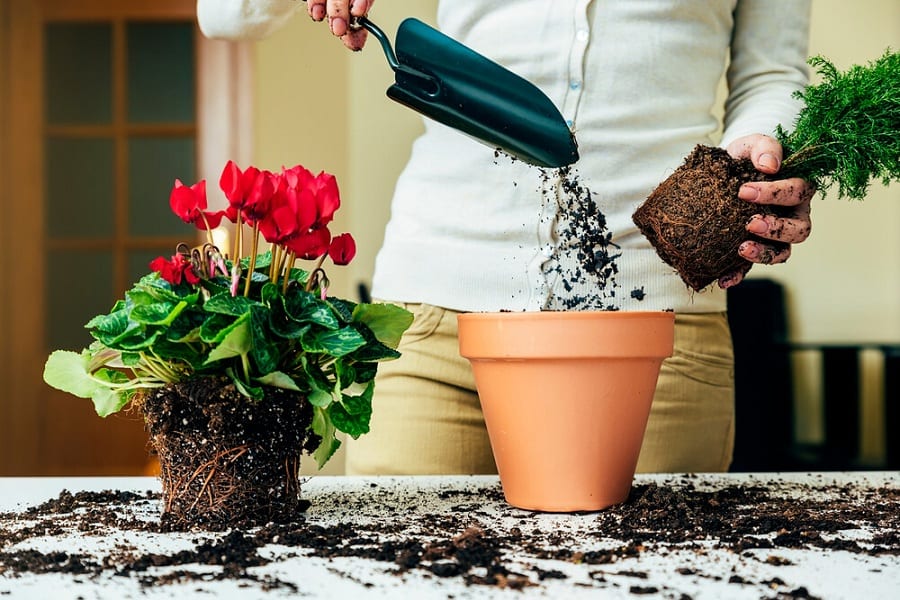You’ve spent many months planning your garden and feel like you finally have all of your plants in order.
Suddenly, it seems a certain plant is no longer thriving or has become too large for its original home, so what’s a gardener to do?
Transplanting is the answer here and it’s a common part of the gardening process that doesn’t get as much recognition as it needs.
Just like us, plants sometimes need a change of location to become happier and healthier, and they need to be in a home that’s the right size and fit for them.
So, how do you transplant a plant?
Transplanting or replanting a plant is a careful process that involves watering the root ball, creating a new planting hole, and tending to it with care so that it takes to its new home.
Plants don’t need to be transplanted all the time, but some have additional requirements, so it’s a skill that every gardener should learn.
With a bit of practice, you’ll be a pro at transplanting plants, and everything in your garden will thrive and bloom as it needs to.
We’ve compiled this guide to make matters easier and take you through every step of the way when transplanting, as well as the why and when of this crucial gardening process.
Table of Contents
What is Transplanting?
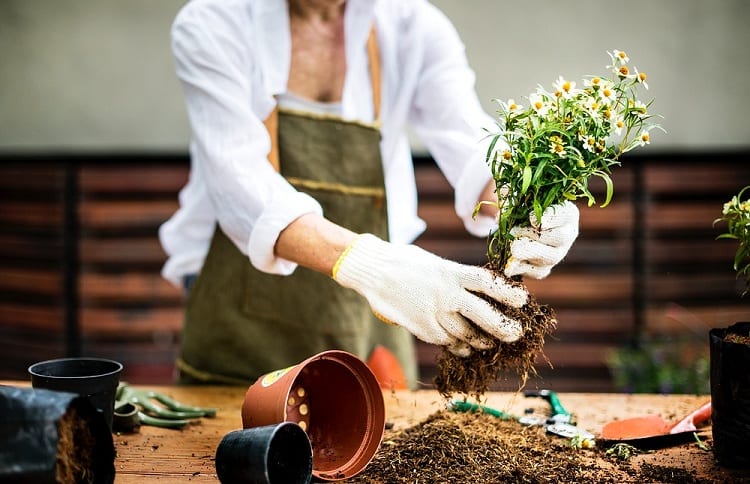
Transplanting is a common gardening term, sometimes called replanting, and it refers to the moving of a plant.
This could include moving plants to a different location, changing the pot that they live into something more adequately sized, or dividing a plant by moving half of it to another location or container.
The term transplanting has to do with the act of unearthing the plant and moving it to a new location.
It’s not something that has to be done all the time with plants, but the savvy gardener should know when it’s time to do, and how to do it properly.
Why Should We Move Our Plants?
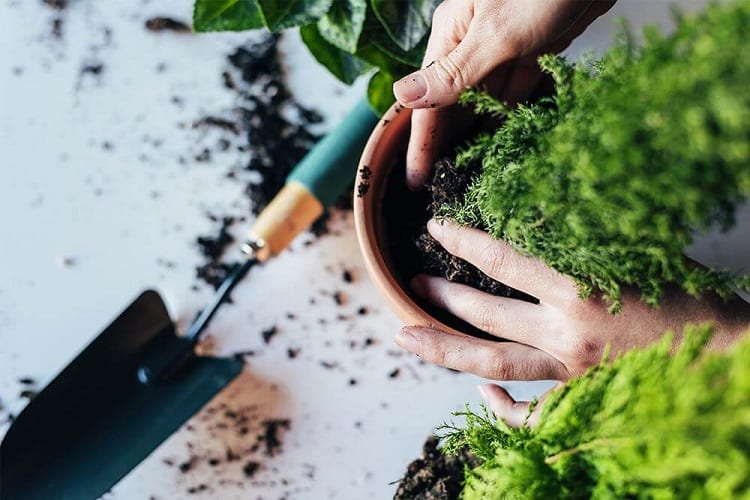
Although it would be easy to just leave our carefully planned garden or pretty houseplants where we first put them, it’s simply not possible.
Plants are like people in that they need to change locations to thrive and will be their healthiest when in the right conditions.
There are many reasons why a plant needs to be transplanted and not all of them will apply to your plants all of the time, so you should understand the different species and what they require.
If you’re unsure what’s required for your plant, consider some of these reasons why a plant might need to be moved:
They’ve outgrown their pot
When you purchase a plant from the nursery, it usually comes in a plastic plot.
During spring especially, you’ll see loads of plants like annual flowers and perennials that will go through huge growth spurts, and likely outgrow their original pots.
Unlike seeds and cuttings that need a little time, it’s normal for plants to get too big to reach maturity in these pots, and it should be easy to spot which ones these are.
They need to be divided
An easy way to get free plants for your garden is by looking at the existing ones and seeing who can be divided.
There are skills involved with dividing plants but it’s not too hard to master, and it helps to spread more of a healthy and plentiful plant through the garden without buying more.
They have to rebloom somewhere new
Many flowers require a good transplanting to allow them to bloom again, and if you have hostas, peonies, or daylilies, this will apply to them.
It doesn’t need to be often but aim to transplant these flowers every two to three years after giving them time to regenerate themselves in their new homes and bloom again. This movement will rejuvenate them and cause them to bloom once more.
Weather conditions are changing
If summer is approaching and you need to get plants out of the sun, or winter is near and they need to be in a greenhouse, it’s common to transplant for this purpose.
The changing seasons can bring a huge transformation to the weather and a plant’s home will need to be adjusted accordingly.
When Is the Best Time to Transplant?
Like many other parts of gardening, the best time to transplant is during spring or when the weather is warmer, but not as hot as summer. This is because plants are at their most eager to grow and will likely take to the move and their new home a lot easier.
If you’re planning to transplant, you’ll want to do the job first thing in the morning but not while temperatures are too cool.
Results will be better if you do it without the blazing sun causing any issues, so in the morning on a spring day is ideal.
Working with a vegetable garden is a little different, so you’ll want to move your salad greens and lettuce when it’s even cooler, like early spring.
The other vegetables should wait until it’s warmer still, so leave the peppers and tomatoes until temperatures start to rise a bit more.
The Steps to a Happy Plant Transplant
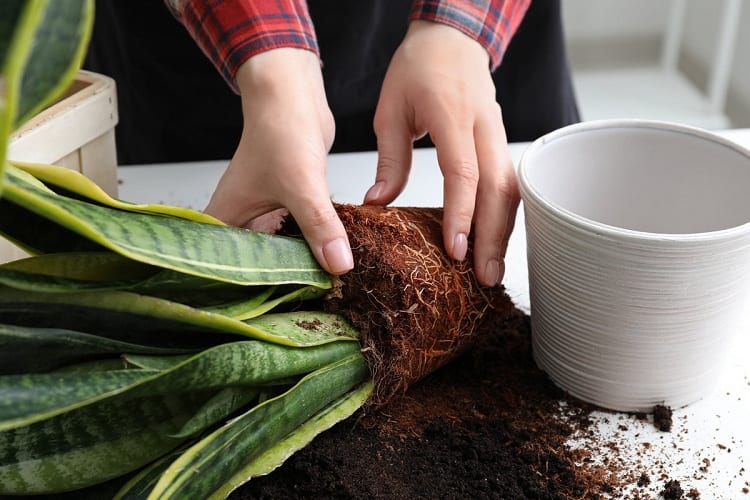
Transplanting plants is an easy process but requires some gentle maneuvering so the plants don’t go into shock.
These steps apply whether you’re rearranging your plants or moving them to a new home, and should make the job simple.
- Take the entire plant out of its pot and look at the roots.
- If needed, tease the roots apart gently to remove some of the soil and allow them to spread out into their new home.
- Prepare a hole in a new pot or the ground with enough space for the plant to sit at the same level as the topsoil.
- Put the plant into the hole and then make the soil firm around it using your hands.
- Give the soil a thorough soaking which allows the roots to spread through the soil and become connected in its new home.
Tips for Stress-Free Transplanting
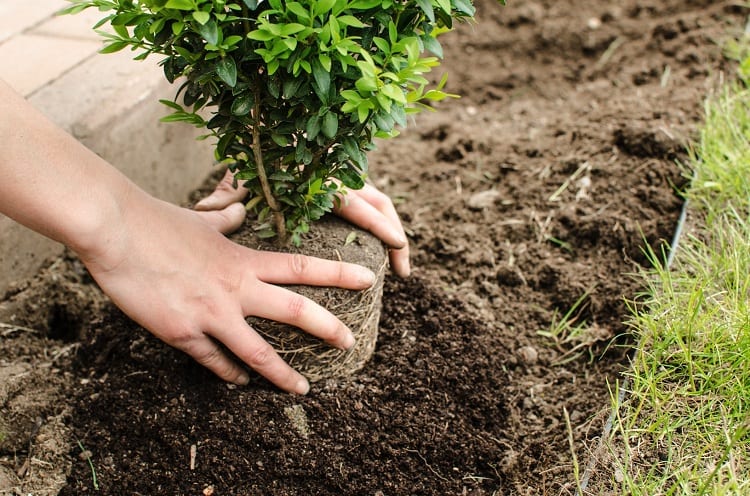
To ensure a stress-free experience for your plants moving to their new home, this job should be done with care.
Follow these tips that will make it easier on you and them, and ensure better results in the end.
- For bare-root plants, let the roots soak in water for a few hours before moving them to their new home.
- You can water the leaves as well as the soil when transplanting to lessen the chance of shock.
- Use a cover or shade for new transplants that keep them out of the sun for a few days at least.
- Do a daily check on newly transplanted plants to see how they’re coping with their new living arrangements, and keep it up for a few weeks.
- Consider watering a small amount twice a day for transplanted plants until it becomes established.
Transplanting for Success
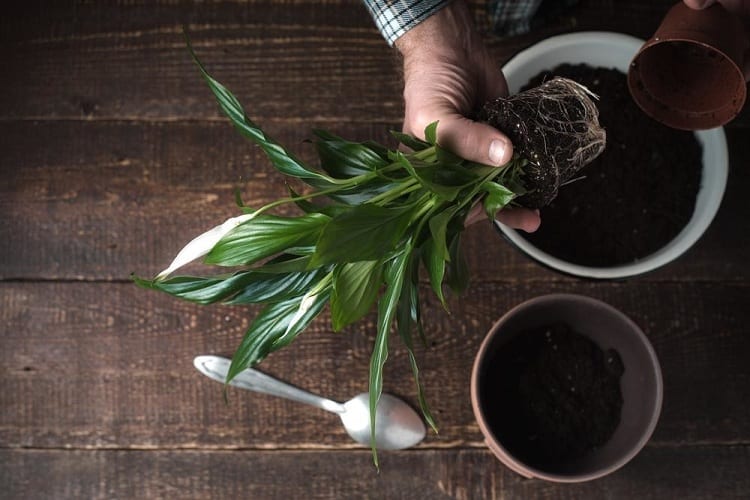
There are a few key skills a gardener should have that will allow their garden and potted plants to thrive.
Knowing when it’s time to transplant a plant or move it somewhere else is one of them, but it’s not a skill you’ll learn overnight.
Like any part of gardening, it takes time to get it right, so you can expect some trial and error when you first have to replant one of your prized possessions.
When done right though, you’ll witness first-hand how your plant blooms and grows in its new home, and you’ll feel a sense of satisfaction that you helped it achieve its full potential.
Related Questions
Plants are just like children and they require many things to help them grow, and not just survive, but thrive.
Being aware of when they’re due for a move or replanting is just another skill that gardeners will need, and if you have more questions about it we’ve answered some common ones.
The best measurement for a pot should be around the same size as the plant, as anything too small or too large will have negative effects.
Once your plant starts to outgrow its pot and it appears its growth has been stunted, you can transplant to something larger without being too excessive.
It’s recommended to leave new houseplants in the plastic pots they came in for around 12 months unless they appear to be growing too large for it quickly.
By keeping them there for a year or so, this allows them to get used to the conditions and won’t shock them too much with a move or transplant while they’re young.

